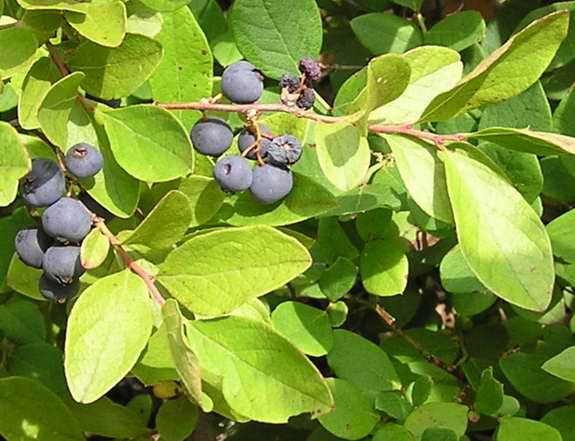|
Common Name: Highbush Blueberry, Bilberry, Whortleberry, Huckleberry (In actuality a different species, Gaylussacia baccata though frequently misidentified as blueberries) Scientific Name: Vaccinium corymbosum (Genus Vaccinium is Latin for blueberry or whortleberry, species is from Greek korymbos, meaning a cluster of fruit or flowers)
Potpourri: Blueberries were widely used by Native Americans for both culinary and medicinal purposes . The Iroquois mashed fresh blueberries into a paste which was then dried or cooked as a means of preservation. According to Roger Williams, the founder of Rhode Island, a favorite dish was cornmeal blueberry mush or sautauthig from sautaash, their name for blueberry. Sautauthig is alleged to have been a part of the Pilgrims' Thanksgiving feast.
There are well over 30 varieties of blueberry cultivars based on original breeding work initiated in the early 1900's by Elizabeth White in New Jersey. Collaboration with Dr. Frederick Coville of the USDA resulted in the first commercial blueberries being cultivated and marketed in 1916 as "Tru-Blu-Berries."
Blueberries have a number of medicinal properties. Dried blueberries have been used to treat bowel complaints. Eating blueberries has been shown to improve visual acuity and to reduce the incidence of peptic ulcers. Native Americans used the berries to treat scurvy, diarrhea, dropsy, bilious fevers, and to drive out madness. A tea made from the roots was used as an antispasmodic for hiccups, cramps, epilepsy and hysterics. |
